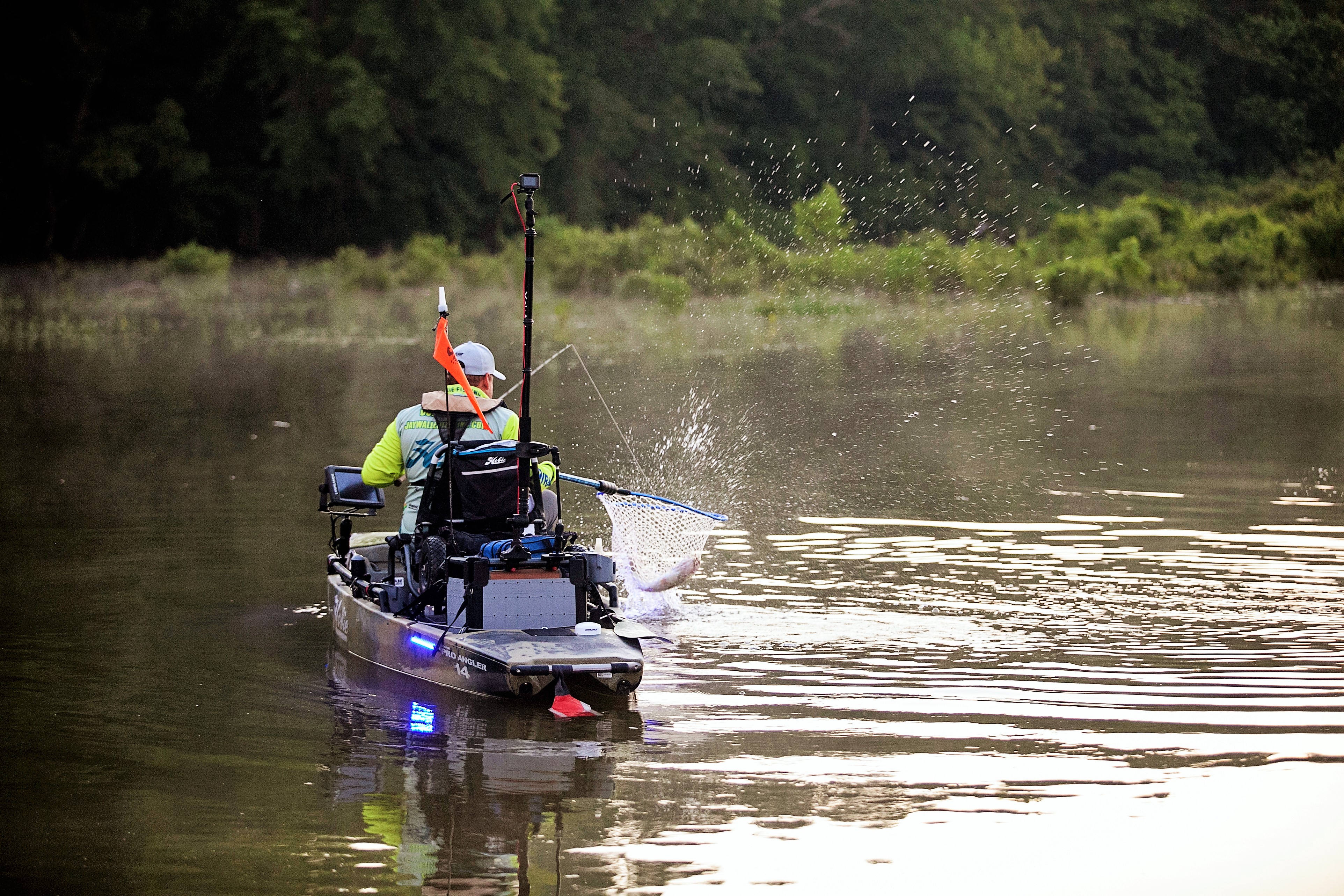- Elite Kayak Anglers from Around the Globe to Attend First-of-Its-Kind Competition
- Cookeville, Tennessee selected to host the first-ever Pan-American Kayak Bass Championship May 28-31, 2019

COOKEVILLE, Tenn. – Cookeville-Putnam County Visitors’ Bureau, along with USA Bass and Pan-American Sportfishing Federation, announced today that Cookeville will serve as home to the inaugural Pan-American Kayak Bass Championship, May 28 – 31, 2019.
The first-of-its-kind in the world, the four-day event will welcome more than 100 of the most elite kayak bass anglers from around the globe to Center Hill Lake. The exclusive competition is invitation only and is expected to include participants from Mexico, Panama, Dominican Republic, Costa Rica, Peru, Brazil, Canada, and more. More than forty Pan-American countries will be invited.
“Cookeville is a world-class destination and the perfect place to showcase our state’s warm hospitality and incredible natural resources, including the lakes, rivers and streams unique to our Upper Cumberland,” said Commissioner Mark Ezell, Tennessee Department of Tourist Development. “This is a tremendous win for Tennessee, and we know Putnam County will set a high standard for visitors who want to return year after year.”
In addition to being an inaugural Pan-American championship, officials with the Confederation Internationale de Peche Sportive (CIPS) will be in attendance to evaluate the potential for officially making kayak bass fishing a world championship level sport.
“Cookeville and Center Hill Lake quickly became the clear choice to host this historic event,” said Tony Forte, U.S. Angling founder and USA Bass president. “Kayak fishing is exploding worldwide and the Pan-American Sportfishing Federation felt it was time to make it an official sport.”
“This event is not just a launching point for Pan-American countries, but also in-line to become a world championship sport and push toward Olympic recognition. Our USA Bass team led by Captain Eric Jackson is looking forward to hosting kayak bass fishing’s best. We thank the Cookeville-Putnam County Visitors’ Bureau for their support and hope to see plenty of fans at the event and following via various media outlets.”
The visitors’ bureau plans to leverage its strong partnerships with local outdoor enthusiasts, such as Jackson. As an Olympian, champion kayaker, and president/CEO of Jackson Kayak, partners such as this will offer an added advantage in hosting and supporting the logistics for this event.
Cookeville is no stranger to high level fishing attention, having hosted multiple internationally televised fishing shows on the Outdoor and Sportsman Channels and the World Fishing Network, e.g. Major League Fishing GEICO Select Series, Fishing University, and Kayak Bassin’ TV.
“We have been working for several months to recruit this big win for our community,” said Zach Ledbetter, vice president of visitor development, Cookeville-Putnam County Visitors’ Bureau. “As we prepared the bid-proposal for this event, we knew Cookeville-Putnam County was a natural fit.”
“We have an ideal destination for outdoor enthusiasts, especially those who want to compete on calm and bass-filled waters,” added Ledbetter. “Aside from the outstanding hospitality of our community, the value of our natural assets allows us to welcome anglers from all over the world.”
Participants are expected to arrive early for pre-fishing various area waters, e.g. Center Hill, Cordell Hull, Dale Hollow Lake, Caney Fork, Falling Water, and Calfkiller Rivers. They are also anticipated to stay and explore more local attractions, waterfalls, downtown life, etc. following the competition.
Other destinations considered for hosting privileges included Columbia, SC; Hot Springs, AR; and Branson, MO.
The media value for exposure during this event is anticipated to be immeasurable with several high-level outlets already showing interest in covering the competition, e.g. Pro Team Journal by Strike King, Outdoor Channel Strike King’s Fish Hard, and World Fishing Network.
The visitors’ bureau will be working with the Pan-Am event staff and area hospitality partners, as well as the Tennessee Wildlife Resource Agency and Army Corps of Engineers to ensure the championship is executed successfully.
About the Cookeville-Putnam County Visitors’ Bureau: The Cookeville-Putnam County Visitors’ Bureau, a program of the Cookeville-Putnam County Chamber of Commerce, serves as the designated destination marketing organization (DMO) for Putnam County and is funded by a portion of the Putnam County lodging tax, a tax paid by visitors’ and collected by local lodging partners such as hotels, bed & breakfasts, etc. Ranking at 17th of Tennessee’s 95 counties, the visitors’ bureau is tasked with inspiring travel and overnight stays in Putnam County. Primary marketing pillars in drive and fly markets include outdoors; fitness/sports; motorcycling; arts/culture; and culinary/crafts. Most recent U.S. Travel Association statistics note visitor spending in Putnam County generated $2.7 million in local tax revenue, providing a tax relief for local residents with a savings of $358.47 per household. Explore more at VisitCookevilleTN.com.
For more information about the Cookeville-Putnam County Visitors’ Bureau, info@visitcookevilletn.com.





































